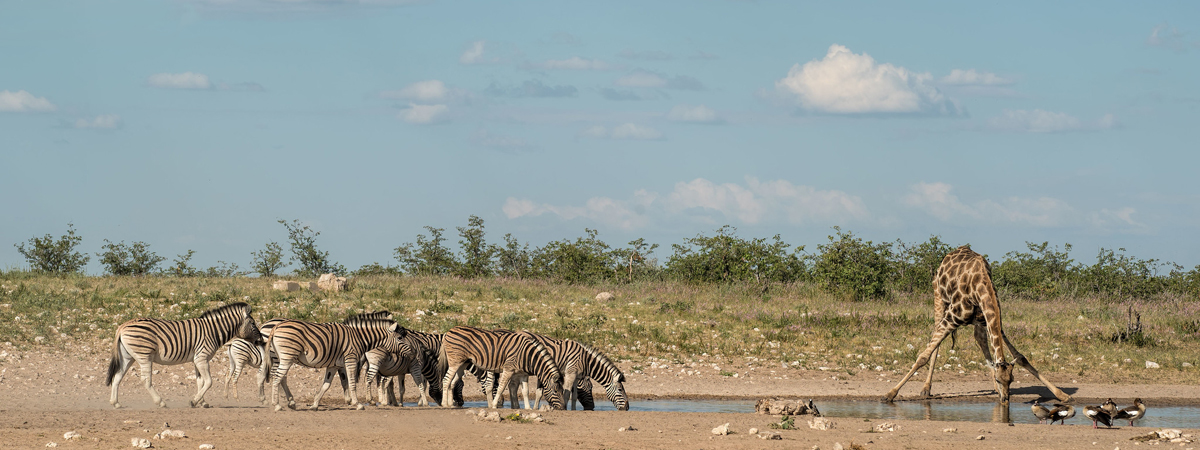One of the key things about taking kids on safari is to get them involved.
A few years ago I escorted a couple of family groups on migration safaris in Kenya.
Having children on safari changes the whole dynamic of a group.
Whereas adults are content to use the time between game drives to relax, read, update diaries or catch up on sleep, the children have energy to burn and need to be kept occupied. With this in mind we had arranged a whole series of activities for each group. Because the age range of each group was quite different this meant we couldn’t simply use the same activities for both groups and had to come up with two sets of ideas.
The first group had four children with ages from 5 – 9, the second also had four kids with ages from 8 – 17.
Keep the kids occupied
For the first group we’d arranged for one of the camp’s Maasai askaris (camp guard) to take the kids and show them the basics of tracking. This involved finding and identifying animal spoor in the dry riverbed and then making a plaster cast of the best tracks they found. The same young Maasai then showed them how to make bows and arrows with sticks cut from local bushes. Of course there was also a visit to the local Maasai boma.
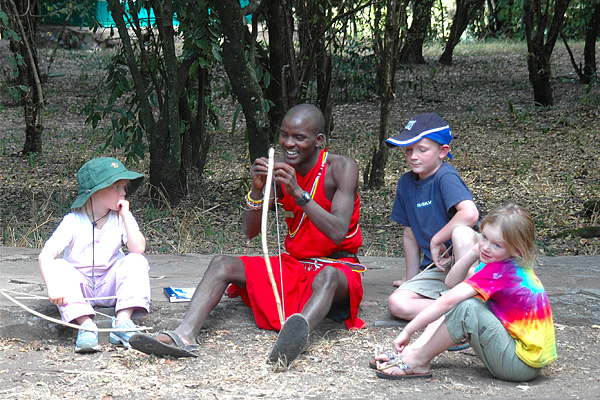
Because the children in the second group were older we could be a bit more adventurous. In addition to visiting the local Maasai village we took them for a bush walk with young Maasai warriors. Along the way the Maasai showed them how they used many of the different trees and bushes to carry out everyday tasks – soft leaves for toilet paper, fibrous twigs for toothbrushes, and crushed leaves as an insect repellent. They showed the kids how to make fire without matches, just by rubbing pieces of wood together
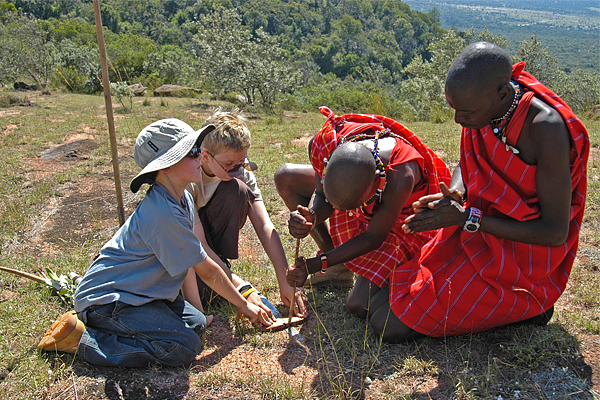
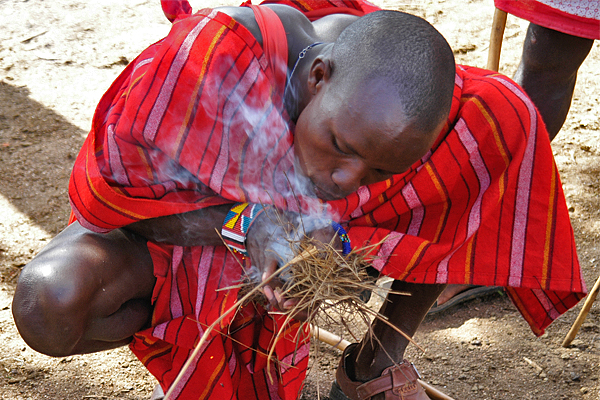
and demonstrated their prowess at spear throwing. Everyone also had a chance to test their own hunting skills with spear and bow and arrow.
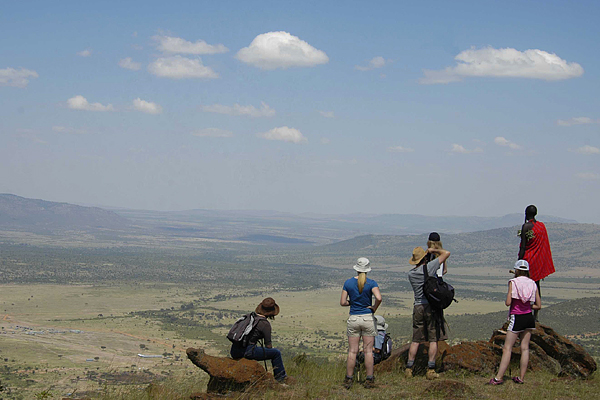
Then, back in camp, the camp cook got taught them how to prepare some basic Kenyan recipes.
All these activities were a great success but it was the game drives that caused the most excitement. Of course that’s exactly what you’d expect – it was a wildlife safari after all – but it wasn’t just seeing the animals that got them excited.
One of the most enjoyable things about taking young children on safari is teaching them the names of all the animals and being amazed at how quickly they learn them.
Enthusiastic young game spotters
So before we set out for our second morning of game viewing I decided to change the rules. Instead of relying on our guide to spot and identify the animals, responsibility was handed to the children.
Suddenly instead of four noisy passengers we had four young pairs of eyes scouring the horizon. To start with we had to give them hints about what direction to look in but after a short while they were up to speed and became totally engrossed in the game drive.
Competition was fierce amongst them; not only to be the first to make a sighting but also the be first to correctly identify the species.
We’d hit on a winning formula. The children were totally engrossed in their game spotting, the parents could sit back and watch their kids enjoying themselves and the guide was loving every minute.
Give the kids a camera
It’s quite common for a family to come on holiday and have just one camera between them. Even couples often travel with just one camera between them; the non photographer being content to enjoy the wildlife without the responsibility of recording the holiday.
On a wildlife safari that makes reasonable sense, especially considering how much a camera and assorted lenses can weigh.
But one of the things I noticed on the first of these two safaris was that the children had their own ideas about what should be photographed. They were constantly pestering whichever parent had the camera to take a picture of this or that.
So for the second safari I dug out a couple of old digital cameras (1 Olympus and 1 Panasonic Lumix) and brought them along. Both had decent zoom lenses and were capable of great pictures. I no longer used them myself because they couldn’t take RAW images. I gave one camera to the oldest child from each family and told them I was sure they could take much better photos than Mum and Dad.
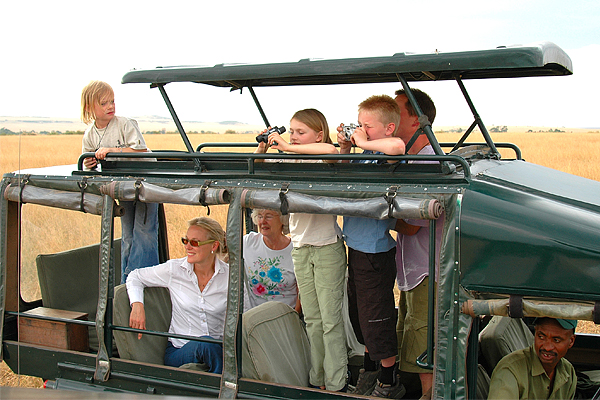
It added an extra dimension to their safari and I found it fascinating to see the kind of things that they photographed.
From a family perspective it meant that there were far more photos featuring both parents and many more pictures of the trivia of the holiday that adults never thought to photograph.
Since that trip I have always found room in my luggage to bring along those 2 old cameras whenever I know there will be children in the group and I’m convinced that it has got quite a few of them hooked on photography.

